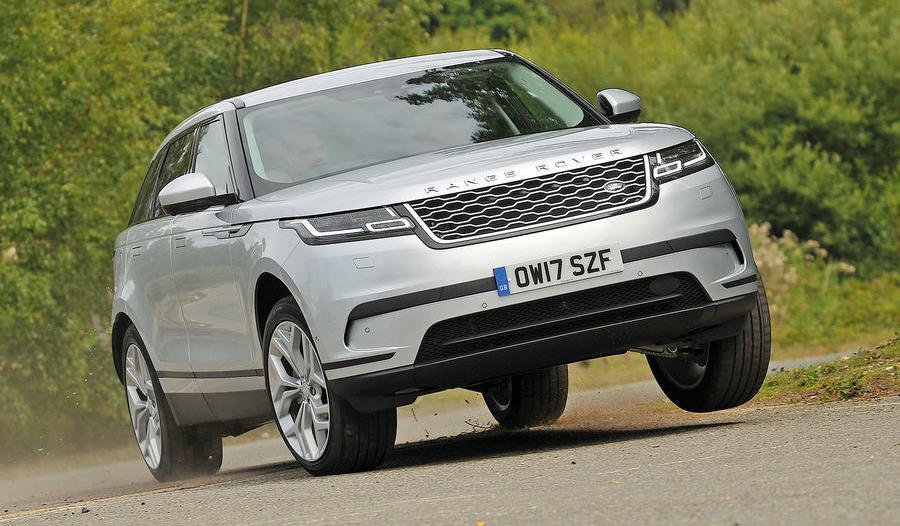Whatever your opinion about modern Land Rovers, you must admit that some are stunning to behold. Take this handsome devil, the Range Rover Velar. It’s objectively good, too, and although it seems to be aimed more squarely at those living up in town rather than down in the country, it will still do all the rough stuff brilliantly given half a chance.
Underneath its suave exterior, there’s the choice of a 2.0-litre four-cylinder petrol in the 247bhp P250 and 296bhp P300 or a 3.0-litre V6 petrol in the 375bhp P380. There’s also a supercharged 5.0-litre V8 in the 542bhp P550. Later models revised this line-up to just the P250, P400 and P400e petrol-electric plug-in hybrid.
Of the oil-burners, there was originally a 2.0-litre four-cylinder diesel in the 178bhp D180 and 237bhp D240, plus a 3.0-litre V6 in the 296bhp D300. Later on, the line-up was trimmed down to just a new D200 and the existing D300.
While the D180’s 0-62mph time of 8.9sec won’t get you foaming at the mouth, it’s solid enough in the mid-range. Still, if you can afford it, the D300 is nicer, with more mid-range oomph. The P300 has 296bhp so it’s quick flat out, but there’s less shove lower down than the diesels provide, meaning you need to work it much harder. The 247bhp P250 petrol needs even more of a workout but still delivers its power smoothly.
Comfort varies depending on which suspension and alloy wheel option you have. The smallest 19in alloy wheels work best, because the ride can get quite fidgety on rough, pockmarked roads. Air suspension is standard on V6 models and provides a ride to suit your mood; Comfort mode is wafty, while Dynamic stiffens things up.
The Velar dashboard features two touchscreens, with two rotary dials on the lower screen (which deals with climate and driving modes) that control various functions depending on what’s displayed on the screen at the time. The one above looks after the sat-nav and media functions.
On SE trim and above, you also get a 12.3in configurable display where the speedo and tacho otherwise go.
The only major tech omissions are Apple CarPlay and Android Auto; there is a Land Rover app that gives you some smartphone mirroring capabilities, but it’s awkward to use.
Space in the front of the Velar is fine even for taller drivers, but the situation isn’t so good in the rear. Head room is fine but leg room isn’t brilliant for those who are long of leg.
Despite Land Rover’s claims, the Velar has a smaller boot than its rivals; this is because it measures right up to the roof, rather than to the window line as other brands do. There is, at least, a 40/20/40-split folding rear bench, though.
Officially, the D180 gets 42mpg, the D200 43.1mpg, the D240 41.1mpg and the D300 38mpg. The P250 gets 30.8mpg, the P300 29.8mpg and the P400 28mpg. There have been two recalls.
The first related to petrol engines built until 31 January 2018 and requires a new fuel rail. The second was for air-con that might not be able to demist the windows of cars built between April and November 2017.
Prices start at around £32,000 for a 2017 D180. Expect to spend between £32,000 and £35,000 on a 2017 car in a high spec. Look to splash out £36,000-£40,000 on a good 2019 model or £40,000- £55,000 on a 2020 car. You need more than £60,000 for a P550.Our pick
D300 S: Despite its use of aluminium, the Velar is a heavy car, so we would go for the effortless performance of the 3.0-litre V6 D300 diesel. Its low-down torque has little trouble getting the car moving and it has plenty of power for faster roads.
Wild card
P550 SV Autobiography Dynamic Edition: Such is the might of this 5.0-litre V8 beast that it can power you in sybaritic luxury from 0-62mph in just 4.6sec one minute and cross a ploughed field the next.
Ones we found
2017 Velar D180 S, 30,000 miles, £32,000
2018 Velar D240 R-Dynamic S, 28,000 miles, £39,995
2020 Velar P550 SV Autobiography, 4000 miles, £77,950
Related News

